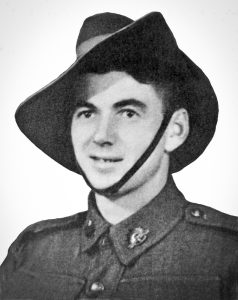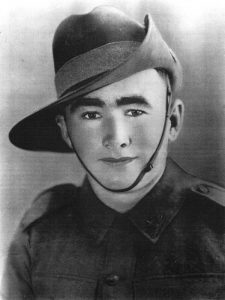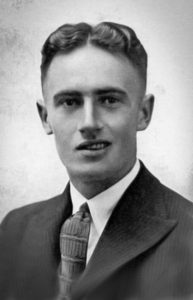‘D’ Company No. 15 Platoon:
CO was Lt. Micklejohn, Platoon Sgt: Sgt Solly
2/4th Btn’s 15 Platoon with total of 37 men was to support 22nd Brigade’s 2/18th Battalion under Commanding Officer Lt. Col Varley. Like the 2/4th, the 2/18th had trained to fight in the M.E. Instead 793 troops sailed on the ‘Queen Mary’ from Sydney to Singapore in 1941.
The 2/18th Battalion assumed garrison duties in Malaya in February 1941 and for ten months in continuous training – with an emphasis on jungle warfare – until the outbreak of war with Japan on 8 December.
2/18th was formed by 4 Rifle Companies A, B, C, D and HQ. They now numbered 900 troops with reinforcements (who had arrived on Aquitania with 2/4th. With their inexperience and the fast moving Japanese front line, they were more of a hindrance during this battle
In the nine days of its total fighting history, the 2/18th lost 225 men killed, with over 400 wounded. These losses, while the lightest sustained by the Division’s 22nd Brigade in the Malayan Campaign, were greater than that of any other Australian unit in a single campaign during World War Two.
With a strength of about 20,000, Australia’s 8th Division consisted of three infantry Brigades (22, 23 and 27), supplemented by artillery, anti-tank, machine-gun and engineering units, as well as signals, transport and other logistical support units.
Just a few days earlier a very antiquated Vickers Gun had been discovered on Singapore, and the 2/4th decided to create a further Platoon. It would be 16 Platoon, made up of soldiers from ‘D’ Coy’s existing Platoons.
** 7 Men transf from 15 Platoon on 7 Feb 1942 to create No. 16 Platoon.
37 Men of 15 Platoon D Company prepared for the Japanese invasion with 2/18th on north west coast of Singapore.
** (Moir had been hospitalised with Malaria 2 Feb 1942).
Troops engaged in heavy fighting for 20 hours before being overrun by the enemy.
11 MEN WERE KIA or DOW 8th & 9th Feb.
Including Commanding Officer: WX93903 Lt. J T Meiklejohn
& No. 2 I/C Platoon Sgt: WX7127 Sgt John F. Solly was also KIA
with 7 others, trying to get out of the west coast having been overrun by Japanese and running out of ammo.
Inc Barrass WIA then DOW
Incl 2 men (Thorpe & Bob Whitford) KIA 15 Feb Buona Vista
** 12 MEN WOUNDED 8th, 9th Feb
3 men Shell Shocked at Ulu Pandan 11 Feb
1 man WIA Buona Vista15 Feb
Bluey Semple and Richard Annear escaped to Sumatra
Leadbitter captured on coast – taken to Changi on 15th
7 able & fit men marched to Changi Prison
AWOL Fremantle, Four men Taken to Java:
WX5336 J.L. Murdoch, WX7600 G.R. Bousfield WX15736 R. Hansen and WX16417 S. Ninyette
WX15905 Edward George Moir sent hospital 2 Feb with Malaria, returned unit 8 March. **

Following information from Les Cody’s ‘Ghosts in Khaki’ – The Battle
15 Platoon was sited in two sections at the end of a narrow peninsula dividing the river mouth from an inlet from the north. Both sections were located close to the water’s edge to get best field of fire.
Of the more southern section of guns, Lt Meiklejohn opened fire at about 2045 against six enemy barges.
On 8th Feb about 6.30am 2 or 3 ranging shots fell in our area destroying an artillery piece and its crew and made a mess of Cpl Kemp’s Bren gun. Then the full barrage came over down the beach. The 16th Platoon was then subjected to unrelenting artillery barrages and aerial bombing – with Japanese artillery appearing to be concentrating on the coconut plantation behind the men leaving the tops of the coconut palms destroyed. Whilst there were no shrapnel casualties – the men endured varying levels of temporary shell shock – by Cpl Eddie Kemp, 15 Platoon.
On 8th Feb 14 and 16 Platoons were heavily attacked from the air. Bombing and strafing continued during the day. Apart from some earlier casualties, the MG Platoons survived remarkably well hidden away in their dug-outs. The men were dazed and there was enormous relief when the barrage lifted at about 8pm. The men were able to snap into action when the landings began.
From Cpl Les Pitts, 15 Platoon…
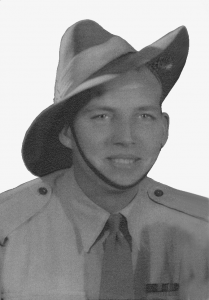
‘During the evening we were taking turns at keeping watch. At about 8pm the other gun in my section on my left opening fire – I think Snow Tapper was No. 1. As Rangetaker, Pitts had given the guns Fixed Lines of fire to operate if we were called upon. I opened fire although couldn’t see anything. Two guns of the other section on the other side of the creek, on our right also opened up on my Fixed Lines of Fire about 1090 yards from shore.
Pitts learned later the gun crew to his left had seen a boatload of Japs looking for somewhere to land and let them have it.
With all our guns were firing there was a hell of a racket out on the water. We could see the bloody Straits full of Japs.
By this time flares were going up everywhere and all guns were firing. Eddie Kemp was handling the ammunition belts for me until some time later Lt Meiklejohn took over from him.
About 11pm we were getting low on ammo so Eddie and I went back about 1/4 mile where we had a few boxes of belts stacked away. Picked up all we could carry and started back to our guns. We ran into a bunch of Japs – who appeared dazed standing around in a huddle. They hadn’t seen us and we avoided them easily’.
The enemy soon got across the small peninsula on which the guns were cited and whilst our gun posts were heavily attacked with hand grenades the enemy seemed not to press home the attack. The guns of the section had been firing for more two hours and continued in action until 1.30am by which time each gun had expended about 40 belts of ammunition.
The gun section further north under Sgt Gardiner had also been busy using only 5 belts less than us and been subjected to grenade attack from close range. This section remained in action until 0100 hours the next morning when informed 15 Platoon (with ‘C’ Coy 2/18th) was almost surrounded and about to withdraw.
Please go to last section to complete their withdrawal Contd……….
Commanding Officer: 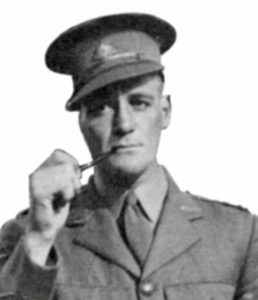
WX93903 Lt. J T Meiklejohn – believed KIA 8 Feb 1942 West Coast Singapore. Wounded in chest. Last seen firing his revolver whilst fighting his way out from coast in company of several men from 15 Platoon, including Solly and John MacDonald.
Please read about Singapore Tours reference to Lt Meiklejohn at Singapore
Platoon Sergeant: WX7127 Sgt John F. Solly
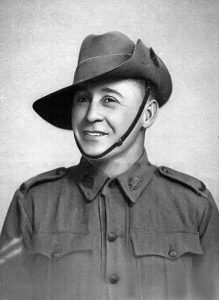
KIA Tanjong Murai 9 Feb 1942 Tanjong Murai aged 41 years.
Sergeants:
WX10925 Sgt Peter Alan Gardiner – Wounded in action 8 Feb, spent 3 days behind enemy lines before being evacuated to hospital. NCO rejoined unit in the line at Holland Village Cemetery, Buona Vista on 15 Feb 1942. Worked on Burma Thai Railway with ‘D’ Force V Battalion. Recovered from Thailand.
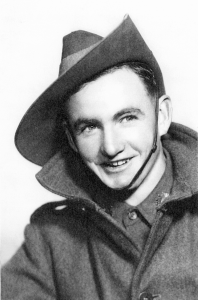
WX9325 Sgt John Ernest Tregenza d. 2 Sept 1943 illness Brankassi Camp Burma-Thai Railway aged 28 years.
Corporals:
WX7998 Cpl Philip Arthur Giese – (25) Wounded in action Ulu Pandan admitted to 2/10th AGH with shrapnel wound to right leg. Discharged to Unit 23 Feb 1942. Left Singapore with ‘D’ Force Thailand , V Battalion. He died 18 Sep 1943 dysentery Brankassi, Burma-Thai Railway.
WX7624 Cpl Edgar Charles ‘Eddy’ Kemp – Wounded in action 10 Feb 1942 fighting his way out from west coast Singapore. Received shrapnel wound bicep of left arm. Worked on Burma Thai Railway with D Force S Battalion. Recovered from Thailand at end of war.
WX7715 Clifford Joseph Spackman – wounded in action 0300 hrs 9 Feb 1942 admitted 2/13th AGH on 10 Feb 142 with shrapnel wounds to left thigh and right leg. Discharged to Unit 22 Feb 1942. Admitted 24 April 1942 with infected shell wound to right leg. Discharged to Unit 27 Sept 1942. Worked on Burma-Thai Railway with ‘D’ Force Thailand V Battalion. Recovered from Thailand at end of war.
WX7499 A/Cpl Ralph Thomas Williams – shell shocked at Ulu Pandan 12 Feb 1942. Williams worked on Burma Thai Railway with ‘D Force S Battalion. Recovered from Thailand at the end of war.
PRIVATES:
WX13457 Dudley Athelstan Annear

Transferred to 16 Platoon. He was attempting to escape with several others of the Platoon who had been trapped behind Japanese lines. He was 31.
DOW 14 Feb 1942 Johore Straits, during an escape attempt with Bluey Semple and Billy Bell. Bill Bell also died.
He was mates with Blue Semple and Cliff Webb. Blue Semple escaped to Sumatra where several weeks later he was captured by the Japanese along with a number of Australians who had also escaped Singapore.
WX7717 L/Cpl Frank Armstrong – Wounded in action North Lim Chu Kang Rd, west coast Singapore 9 Feb 1942. Admitted 2/10th AGH with GSW right arm. Discharged Unit 22 Feb 1942. d. 30 Jul 1942 duodenal ulcer Sandakan with ‘B’ Force Borneo.
WX7796 Joseph John Samuel BARRASS –Transferred to 16 Platoon. Party scattered under heavy fire . Last seen Wed 11 Feb 1942 by William Gibbs WX8958. Aged 29 DOW 11 Feb 1942 Tanjong Murai.
WX9589 Frederick Markwell BARRYMOORE – Driver (35) was wounded 9 Feb 45 made his way to General Base Depot, transf to AGH with shrapnel wounds to left arm and chest. Discharged 21 Feb 42. ‘D’ Force Thailand, d Malaria Non Pladuk Hospital Camp, Burma Thai Railway.
WX7636 William John (Bill) Beer – (28) d illness 16 Jun 1945 Sandakan, with ‘E’ Force Borneo.
WX9063 Albert James Bell (Bill) –
(22) killed by mortar fire during escape bid, was with with Annear, Slim Pitts at Johore Straits. Had been reported missing from 9 Feb 1942 – several men were left behind Japanese lines following the invasion. At that time, Semple was with the group.
WX7308 Leslie Andrew Blair – Wounded in action Lim Chu Kang Rd 0300 hours 9 Feb 1942 with GSW to left leg. Discharged Unit 22 Feb 1942. Sent to work Burma end of Railway with ‘A’ Force, Green Force No. 3 Battalion. He was recovered from Thailand.
WX7600 George Reginald Bousfield – AWOL when ‘Aquitania’ sailed from Fremantle two weeks later, landed Java with 87 other 2/4th & captured in March. Worked Burma end of Thai Burma Railway with ‘A’ Force Burma, Java Party No. 4 Williams Force. Recovered from Thailand at end of war.
WX7253 Walter Vernon Bow – Transf from HQ Company. Wounded in action Buona Vista 15 Feb 1942 shrapnel wounds to left and right buttocks. Discharged 22 Feb 1942. Bow left Singapore with ‘D’ Force Thailand V Battalion which endured horrific lost of loss due to illnesses. He survived and was recovered from Thailand at the end of war.
WX10390 William Andrew Dwyer –Admitted 2/10th AGH 12 Feb 1942 badly shell shocked & suffering nervous exhaustion. Aged 24 years. ‘D’ Force Thailand d 22 Aug 1943 Brankassi Malaria & Dysentery Burma-Thai Railway.
WX7999 R.P. Ferguson – Transf from HQ Company. Shell shocked at Ulu Pandan and evacuated 12 Feb 1942. ‘B’ Force Borneo, d illness 23 Mar 1945 Ranau.
WX6506 J.E. Fraser – wounded in action 8 Feb 1942 suffering exhaustion and bayonet wound to left hand. Discharged Unit 8 Mar 1942.
WX7745 HARRISON B G -Transf to 16 Platoon
WX7029 HILL E T – Tranf to 16 Platoon
WX9286 HOLMES C – Transf to 16 Platoon
WX8435 Edward Jonathon Leadbitter – (24) Was captured by Japanese west coast of Singapore, escaped and rejoined Unit after surrender. Went with ‘D’ Force Thailand V Battalion to Burma-Thai Railway. He was badly beaten by sadistic guards when he was ill. D. 10 Oct 1943 cholera Kuii, Thailand.
WX224 John MacDonald – (29) Missing believed KIA 9 Feb 1942 near Ama Keng Village, West Coast Singapore.

WX6203 Jimmy McSkene – sent with ‘H’ Force to Burma-Thai Railway during 1943. ‘H’ Force returned to Singapore at the end of 1943. He was recovered from Changi Gaol.
See Bob Whitford.
WX11629 Keith Bedford Mitchell – wounded in action 0400 hrs 9 Feb 1942 GSW to left hand. Discharged unit 16 Feb 1942.
WX9337 Moir, Andrew Donald – Believed to have been KIA night of 8 Feb 1942 by mortar fire. Last seen with his vehicle.
WX5336 James Lewis Murdoch – AWOL Fremantle, ‘Blackforce’ Java, Java Party No. 4, Williams Force. Recovered from Thailand.
WX9287 John Robert Osborne – (28) “F” Force Thailand died illness 27 Sep 1943 Kami Sonkurai, Burma-Thai Railway.
WX7626 A.L. (Slim) Pitts
wounded in action 0200 hrs 9 Feb 1942 shrapnel wound to left thigh. Discharged Unit 24 Feb 1942.
Was behind Japanese lines with several men, including Annear, Bell and Semple. Annear and Bell were killed trying to escape and Semple successfully escaped to Sumatra.
Pitts worked on the Burma end of the Burma-Thai Railway, then taken to Thailand at end of 1943. He was fortunate not to be selected to work in Japan, and remained working in various camps in Thailand.
‘Mick (Lt Meiklejohn) decided that as we were now cut off, we should try to get back to our own forces. He reckoned we were due for a spell as we had been firing for about 4 hours at point blank range. I don’t know how many of the Japs we accounted for but Vickers against boat loads of Japs, at about 50 yds or less, the total must have been considerable…. ‘Singapore the Japanese Version’ – refers to the landing craft running into heavy machine gun fire at about 12.30 am….’
Lt Meiklejohn led his party, still complete with their guns and equipment, up a jungle path. Here they ran into a party of Japs who were apparently resting. The Platoon Commander himself dealt with several with his revolver and big Frank Armstrong made good use of the tripod he was carrying to get his quota. Lt Meiklejohn was killed in the skirmish.
Back to our own lines (so we thought).
We started off back through the coconut palms or what was left of them, for about half a mile. Those I remember in the party were Jack Tegenza, Snow Tapper, Eddie Kemp, Mick Meicklejohn, Jack Solly and several others, some of whom were shell shocked and under the care of our cook Jimmy McSkene. Out casualties, apart from the shelling, had been pretty light and we had built up a hell of a lot of casualties credit in the damage we had done to the Japs.
We had just got out of the palm grove when we spotted a whole bunch of Japs ahead. I don’t know how many, but a helluva lot. They were making a fair racket so we went into a huddle to decide what to do – there were too many to dodge and they were blocking our way out. Some bright bastard said ‘lets charge ’em’ so we fixed bayonets and charged. As soon as we took off the Japs opened up with everything they had. Sgt Jack Solly was killed on one side of me and Mick on the other. I got bonked over with one in the thigh, the others kept going and I didn’t see them again.’
Several other members of the Platoon were killed in the action, some – including Les Pitts were cut off in the beach area. Most of these like Dud Annear and Billy Bell were killed later in the week. They were with Bluey Semple trying to make their way down the coast in a small boat when it was hit by mortar fire. Annear and Bell were killed. Semple, although wounded, managed to make his way to Sumatra.
Pitts survived the fight on the beach. ‘After the shooting stopped, I stayed where I was expecting the Japs to come back and finish me off. Thank the Lord however, they didn’t come near me and I crawled away into some scrub. When I decided no one was worrying about me, I got a field dressing on to my leg and stayed where I was until morning.’
‘When dawn broke on the morning of 10th Feb I took a good look around – I couldn’t see another living soul and everything was quiet. I tested my leg out and found I could get about a bit, so I started off along a bit of track away from the sea – I was sure not going to get any help from that direction. After a while I cam across six or seven other Australians from 2/18th, who had been stationed behind us and after a while we collected a few Poms, also an Indian.
We stayed together and at one stage there were about twenty five of us. We kept going in the general direction of Singapore or at least toward the oil fires. We never regained our lines and after numerous incidents eventually reached Singapore after the surrender. I was admitted to the Hospital in the Cathay building on the 18th February.’
WX9295 Sydney REID, Batman/Runner – Wounded and missing in action, presumed KIA 9 Feb 1942 Tanjong Murai, west coast Singapore 33 years old.
English born Syd enlisted from Kulin where he had been working as a farmhand. His family resided Boulder, his father worked in mining and was killed in a workplace accident Oct 1942. The Reid family had sailed to WA from England when Syd was about 4 years old. He had one brother Frank.
WX7656 George Robert Rouse – (27) KIA 8 Feb 1942 Tanjong Murai, west coast Singapore. Soldier was captured by Japanese troops and killed when he attempted to escape. Pingelly boy, Rouse was married to sister of Stan Neale (died Sandakan 1945).
WX7532 R.R. SEMPLE – WIA 9 Feb 42, GSW to both legs and left upper arm. Believed to be with Bell and Annear. Successfully escaped Singapore to Sumatra. Captured and incarcerated Padan, Gloe Gloer Camp (Medan). Sailed Hirukiku Maru Party, injured when ship sank – remained Singapore. RTA.
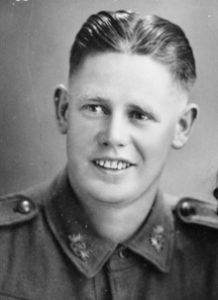
WX7330 Ellis Shackleton – Transferred 16 Battalion.
11 Feb 1942 west coast Singapore Missing in action believed to have been killed or badly wounded aged 27 years.
WX7623 G.T. Shelton – Wounded in action 1800 hrs 15 Feb 1942 admitted 2/10th AGH shrapnel wound left temple. Discharged to Unit 23 Feb 1942. Worked on Burma-Thai Railway with ‘H’ Force Thailand d illness 7 Sep 1943 aged 24 years at Kanu II Malayan Hamlet.
WX9157 Albert Leslie Tapper ‘A’ Force Burma, Green Force No. 3 Battalion. Recovered from Thailand.
WX8180 Edward George Taylor – Transf to 16 Platoon. Remained Singapore throughout war.
WX8450 Taylor F L – KIA Tanjong Murai 9 Feb 42 aged 22. Taylor was badly shell shocked following a heavy artillery barrage. Not seen again after his party moved out from West Coast.
WX8460 J. Thorpe – (25) KIA 15 Feb 1942 Buona Vista. Was killed between 1600 & 1700 hours whilst sheltering behind a house which received a direct hit. **
WX10382 J. Warrington – sent to work Burma Thai Railway with ‘D’ Company T Battalion, split off with O’Dooley Party. he was recovered from Thailand.
WX7232 Whitford, Robert ‘Bob’– (38) DOW 15 Feb 1942 Buona Vista. He was killed during last artillery barrage of the battle. Hit in his chest by same shell which killed Jim Thorpe. **
Bob earned himself the nickname ‘ant track Jack’ because of his reported tracking ability (he could track an ant!) and was our pineapple gatherer and our cook. Jimmy McSkene emulated the Japanese across the Strait but finding stray ducks amongst the abandoned houses. All civilians having been evacuated from the area. From Les Cody’s book ‘Ghosts in Khaki’.
WX7499 R.T. Williams – Shell shocked Ulu Pandan 12 Feb 1942. Worked on Burma-Thai Railway with ‘D’ Force S Battalion. Recovered from Thailand at end of war.
Reinforcements
WX15736 R. Hansen – Was AWOL Fremantle when ‘Aquitania’ sailed 16 Jan 1942. One of 88 men from 2/4th who sailed to Java and taken POW there in March. Like Bousfield he was sent to work on Burma end of Railway. Was recovered Thailand at end of war.
WX16417 S. Ninyette – AWOL Fremantle, ‘Blackforce’ Java, Java Party No. 4, Williams Force. Recovered from Thailand.
WX15905 Edward George Moir
Admitted 2/9th AGH 2 Feb 1942 with malaria. Transferred 2/10th AGH and discharged Unit 8 Mar 1942.
d. 1 Oct 1943 Kuii, Burma Thai Railway ‘D’ Force Thailand V Battalion aged 32 years.
By 15 Feb 1942 there were only 7 fit men from 15 Platoon able to march to Changi Prison Camp
WX7532 Robin Roy SEMPLE – WIA 9 Feb 42, GSW to both legs. Escaped to Sumatra.
WX8435 Edward Jonathon Leadbitter – (24) Was captured by Japanese west coast of Singapore and rejoined Unit after surrender. (later Died Cholera Kuii POW Camp with’D Force Thailand V Battalion 10 Oct 1943)
11 men were KIA including Meiklejohn & his Platoon SGt, Soll
(incl) Barrass was WIA & DOW
(incl) Thorpe & Bob Whitford were KIA Buona Vista
12 men were WIA and Evacuated between 8 & 9 Feb
Bow was WIA at Buona Vista
3 men were Shell Shocked at Ulu Pandan & Evacuated
Semple and Annear escaped to Sumatra
———-
Please read about 16 Platoon.
The Japanese Attack
8th February 1942 – North west Singapore
Just after dawn the Japanese increased air activity dive bombing and machine-gunning forward areas – in particular 22nd Brigade and forward machine guns – “C” Coy of 2/4th. All observed movements were attacked and the rear area and roads heavily bombed.
By 1000 artillery barrage hit the forward companies of 2/18th and 2/20th. “D” Coy HQ situated at Ama Keng village had been under attack and had a quiet spell before the shelling started. Fortunately slit trenches provided adequate cover and casualties were light. But the surrounding rubber plantation was stripped of foliage.
At noon, the Japanese ceased their aerial attack. The Australians believed the Japanese had ‘knocked off for lunch’. However the afternoon was the same as the morning – heavy shelling with irregular groups of single explosions maintained the mental and physical pressure on the Allied troops.
By nightfall the bombardment increased. Verbal contact was lost amidst the roar of exploding shells spreading debri and red hot fragments of shrapnel over the area. The soldiers now feeling isolated in their own nightmare whether sharing or a single trench. They were like trapped animals in their burrows. Many praying others pleading for a halt.
The bombardment continued throughout the next morning. There was no let up. The Japanese concentrated on both the forward and rear Allied positions of 2/18th and 2/20th areas. The beach area was heavily targeted and just after midday 13 Platoon received a direct hit suffering their first casualties – the death of Bobby Pratt and severe wounding of Bill Patterson and section commander, Joe Pearce. There were further casualties and loss of another gun pit.
The men thought it a miracle they hadn’t lost more lives.
The situation was much the same for 15 Platoon. Brigadier Varley, 2/18th wrote that during his four years of service 1914-1918 he had never experienced such concentrated shell fire over such a period. Signal communications were cut and repaired and cut again.
Eddie Kemp wrote : ‘About 6.30am on 8th Feb two or three ranging shots fell in our area. One destroyed an artillery piece and its crew and one closer made a mess of my personal Bren gun, which he had scrounged whilst unloading a boat in the harbour earlier in the week. Then the full barrage came right down on the beach. We escaped some of the shelling, but it was still an absolute nightmare. Japanese artillery seemed to concentrate on the coconut plantation to our rear where hardly a coconut palm remained.’
Les Pitts was in same section ‘it seemed to me that they were using high explosive rather than any form of anti-personnel shells for although the tops of the coconut palms were destroyed, we had no shrapnel casualties. The constant blast of concussion from the exploding shells had its effect and there were varying levels of temporary shell shock.’
During the day of 8th February bombing and strafing continued over 2/20th and 2/18th areas as well as the 2/18th forward area.
The smoke from blazing oil tankers in the naval base with the fading light of early evening reducing observation for those manning forward posts. There was no moon and the continual shelling blanketed any sounds from the Japanese across the strait. The men strained to pick up the first signs of the attack they were certain was coming.
The 2/4th Machine Gun Platoons had survived remarkably well although, however were affected by the shelling – some more than others. All were dazed and there was a sense of unreality undertaking the smallest of tasks.
There was a sense of enormous relief when the barrage ceased about 8pm. The first sounds of enemy craft were picked up by a forward post of ‘D’ Coy 2/20th. Moments later the sound of motor increased – the forward post alerted the men into action with a burst of bren fire.
Lt Eric Wankey, 13 Platoon who was at their HQ away from the beach, raced down to their gun positions, followed by the spare gun numbers who postioned themselves along the front. They held fire until the barges were close to shore and opened up the three guns with devastating effect. The tide was out. One barge was snagged on a sandbank, swinging sideways. It was ripped to pieces by machine gun fire and hand grenades. Several barges were sunk spilling Japanese into the water. One loaded with explosives had been set alight – providing extra light for the gunners. One of the beach lights had been knocked out and another failed to operate. All guns turned on the Japanese in the water. Few if any survived the first wave.
But there was no let up as more landing craft loomed up out of the darkness, at least 20, each with about 25 Japanese on board.
A Japanese landing party of six barges approached the southern section under Meiklejohn and No. 15 platoon’s two sections kept firing for two hours despite retaliation by hand grenades. Inevitably, the Japanese landing parties were able to outflank the thinly-spread Australian positions.
……….Story Cont’d With little ammunition and to avoid being overrun Meiklejohn ordered the southern section to retreat. He led his section along a jungle path where they came upon a party of Japanese resting. Meiklejohn shot some with his revolver and another was knocked out with a swing from a machine gun tripod by Frank Armstrong, however Meiklejohn lost his life in attempting to cover his section’s withdrawal. Other deaths included Jack Solly, John MacDonald.
Others remained cut-off in the beach area, such as Slim Pitts, Dud Annear and Billy Bell. The latter two were killed whilst trying to escape Singapore later in the week. Bluey Semple originally with Annear and Bell, managed to escape to Sumatra.
The northern section of 15 Platoon under command of Sgt Gardiner held its ground until it was informed that a near-by infantry platoon from 2/18th was almost surrounded, and about to withdraw. The machine gunners were forced to retreat without their guns. They also ran into a group of Japanese troops blocking their path. Cliff Spackman was attacked by a Japanese officer wielding a sword, Spackman “bayoneted him”, took the sword and used it against another Japanese soldier. They continued to fight their way out killing several Japanese but suffered heavy casualties.
Results of this period were Seven dead (including Shackleton and Reid who were missing and injured, later found dead), six wounded, about five missing – including Sgt Gardiner, wounded behind enemy lines and evacuated to hospital 3 days later), Leadbitter who had been captured (escaped to rejoin Unit after capitulation).
By Surrender on 15 Feb, 1942 another Two died and another Seven wounded or shell shocked.
Please read address Fall of Singapore Service 12 Feb 2023

